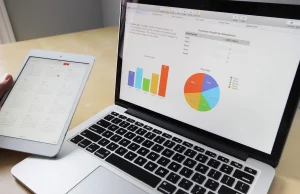Are you looking to start trading stocks, but don’t know how to get started? Don’t worry, you are not alone. Many people feel overwhelmed when they first start trading. The good news is that with a little bit of guidance, you can create a successful trading strategy. In this blog post, we will discuss some useful tips that will help you get started. We will also provide some helpful resources that can teach you more about stock trading.
Here are some of the tips to help you create a good trading strategy:
- Form Your Market Ideology
- Choose a Market For Your Trading Strategy
- Choose A Trading Time Frame
- Choose A Tool To Determine The Trend (Or Lack Of)
- Define Your Entry Trigger
- Plan Your Exit Trigger
Form Your Market Ideology
Your market ideology is your set of beliefs about how the financial markets work. This includes things like whether you believe that markets are efficient or inefficient, whether you think that prices are mostly driven by fundamentals or by technicals, and so on. Your market ideology will guide the development of your trading strategy, so it’s important to spend some time thinking about what you believe and why.
There are a few different ways to go about formulating your market ideology. One is to read as much as you can about the various schools of thought in finance and trading. According to the people behind www.usethinkscript.com, once you’ve been exposed to a variety of ideas, you can start to develop your own views of the market. Another approach is to simply start trading and observing what works and what doesn’t. Over time, you’ll develop a sense of how the market works and what your own beliefs are.
Whichever approach you take, it’s important to be aware of your market ideology and how it affects your trading strategy. If you’re not sure what your ideology is, that’s OK – just be aware that it exists and try to be conscious of its impact on your trading.
There’s a lot of reading ahead of you and you should make sure to figure out what your final approach will be so that you can make all the right decisions. Make sure to learn more about options trading and other strategies so that you can make your strategy as effective as possible. Find resources online such as books, blogs, and other websites that can help you gain the knowledge and skills that will teach you more about options trading. Doing so will help you understand how the market works better and make more informed decisions when it comes to your trades.
Choose A Market For Your Trading Strategy
There are many different markets you can trade, each with its own unique characteristics. When choosing a market for your trading strategy, you need to consider things like the average daily range, liquidity, and volatility. You also need to make sure that the market you choose is one that you understand and have an edge in. There’s no point in trading a market if you don’t have a clear understanding of how it works.
For example, if you’re interested in day trading, you’ll need to find a market with enough liquidity to allow you to enter and exit trades quickly and at a good price. The forex market is usually a good choice for day traders, as it is the most liquid market in the world. If you’re interested in swing trading, on the other hand, you might want to look at a market like the stock market, which has more volatility and allows you to take advantage of longer-term price movements.
The most important thing is that you choose a market that you understand and have an edge in. Once you’ve done that, you can start to develop your trading strategy.
Choose A Trading Time Frame
The first step is to choose a time frame that suits your trading style. If you’re looking to scalp the markets, then a shorter time frame like five or 15 minutes would be more suitable. However, if you’re aiming for larger profits with less frequency, then a longer time frame like an hourly or daily chart would be better. It all depends on how much time you’re willing to spend in front of the computer and how patient you are. Also, keep in mind that the longer the time frame, the more accurate your data will be.
Choose A Tool To Determine The Trend
There are many ways to determine the trend. You can use a moving average, support and resistance levels, or Fibonacci retracements. Each tool has its own pros and cons, so it’s important to choose the one that works best for you. Experiment with each tool until you find the one that gives you the clearest picture of the market trend.
Another way to determine the trend is by using price action. This involves looking at candlestick patterns and chart formations to identify buying and selling opportunities. Price action is a very popular method among traders because it’s relatively easy to learn and it can be applied to any time frame.
Define Your Entry Trigger
Your entry trigger is the conditions that you set that tell you when to buy or sell. This could be a certain price or a technical indicator like RSI or MACD. Once you have your entry trigger, you can start to look for opportunities in the market.
When looking for trade opportunities, it’s important to keep an eye on the overall trend of the market. You don’t want to be buying as the market is falling, or selling as it’s rising. Look for pullbacks within the trend, where the market retraces before continuing in the original direction. These can provide good entry points as there is often less risk involved than trying to pick tops and bottoms.
Plan Your Exit Trigger
Most traders think about their entry triggers when planning a trade. But just as important is your exit trigger. Your exit trigger is the point at which you will take profits or close the trade to avoid losses. There are several factors to consider when deciding on an exit trigger, including your desired profit target and stop-loss level. You should also consider the time frame of the chart you are trading and any relevant support and resistance levels. Once you have planned your exit trigger, stick to it! Emotional trading can be costly, so it’s important to follow your pre-planned strategy.
When it comes to creating a good trading strategy, the most important thing is to make sure that it works for you. There are a lot of different factors that can affect your success, so it’s important to find what works best for you and stick with it. These tips should help you get started on the right track.














